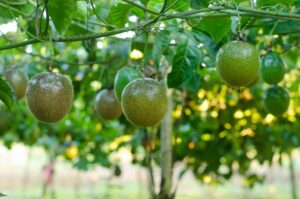
A friend has been trying to grow passionfruit for the past 15 years with little success, and now he’s in trouble with his wife, Joanne, for throwing good money after bad, buying pairs of plants at a time, only to have them flop.
“I have been trying for over 15 years to grow a strong and fruitful passionfruit vine, and apart from one year, have been unsuccessful,” he wrote in an email
“My wife is tired of spending good money after bad each and every year,” he says. “Please help!”
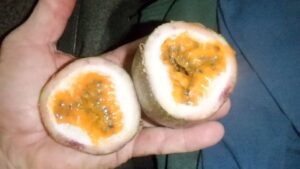
“I have tried different areas of our property, sheltered or open, in the garden and in pots, but always the same result.
“It starts off promising for 4–5 weeks, then the leaves discolour and fall off, and the branches follow suit. I thought something was eating them and used pesticides, copper tape around the pots and even netting, but every time the same result.
“The one time it did work was a yield of 8–10 fruit in year one, then the neighbour put a new concrete slab down and when he hosed it down, all the overflow landed around my vine.
“My friends have a great vine, and they do nothing at all! Go figure. Hope you can give me some pointers on my next attempt.”
Well, yes we can, Darren, says the NZ Passionfruit Growers Association secretary Christine Herbert. And as it turns out, old-mate, you’re not alone. But maybe, just maybe, this might be your year.
“Passionfruit have a reputation of being fickle and hard to grow plants,”
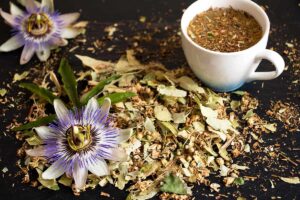
The flowers & leaves of the passionfruit vine have medicinal properties when used as a tea or by other form of administration. Good sleep medication one is told.
But before we get started on Darren’s problem, here’s a little known fun fact that one says may help answer other readers’ questions about passionfruit vines, and why their flowers keep falling off.
“Passionfruit will have two flushes of flowers each year when the conditions are right,” it is said. “Usually about October/November with fruit 90 days later. Once the fruit starts to drop off, they will start flowering again, if it’s warm enough, so about March. If this fruit sets it takes longer to ripen because there isn’t as much sunlight hours in winter, so fruit could still be on in June.
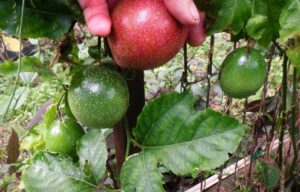
“Flowers abort and drop off when overnight temperatures drop below 19C, and they need the bees to pollinate them. Spent flowers will drop off and the vine won’t start producing them again till it warms up.
“This last season commercial growers noted that fruit set was delayed about a month due to the cold snap in October and the frosts damaged new spring growth and there was fewer fruit because the bees didn’t come out in the rain during the day. Lack of sunlight hours also affects pollination and fruit ripening.”
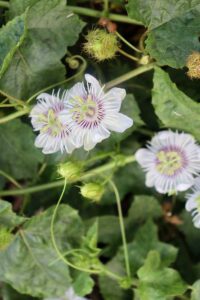
Here’s another little known fact, it is said. Vines need to be hard-pruned, whereas most people just let them ramble and strangle themselves. Vines fruit on new season’s growth. So prune in winter, back to about five leaves on each lateral. Keeping airflow through the plant is important to prevent diseases that are transmitted by air and water.
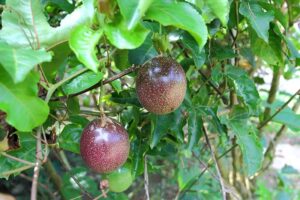
“The yellowing usually presents as a symptom of a lack of nutrients because the pathogens – like pythium and phytophthora – prevent the flow of nutrients into and through the plants, which ultimately causes death.”
“If the soil is clay, like a lot of Auckland soils, it will need aerating with composts down to about 50-100 cm. Treatments for soils can include adding trichoderma and mycorrhiza, as well, but it’s not 100% guaranteed. Soil pH should be about 6.3-6.5 up to 7, so slightly acidic.”
Passionfruit are gross feeders, so like lots of nutrients, says Christine. Seaweed mixes, and fish hydrolysates are good for the home gardener, as are calcium-nitorgen mixes.

“I generally suggest people use whatever they have in the shed, like tomato, potato and rose food. Passionfruit like magnesium during flowering times, so a sprinkling of Epsom salts is appreciated. Seaweed and fish ferts can be used as a foliar spray as well.
“Commercial growers do leaf tests throughout the year and apply fert dressings as required, but for the home garden a good all-round NPK fert is probably sufficient.
Watering depends on your soil and it’s water holding capacity. Passionfruit don’t like to have wet feet but like to be kept moist.
When weeding around young plants you need to be careful because they can have shallow roots. And that’s what may cause some problems as people upset the roots. Older plants have quite an extensive root system, and can go down a metre and spread out even further than that. If you do upset the roots you should be looking for nice white roots. If you’ve got a little bit of pink or brown in them, you might have some sort of soil borne disease.
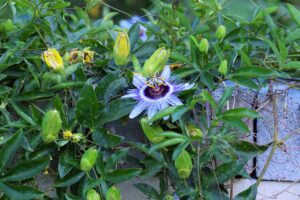
“Other diseases, like the fungal diseases that cause grease and brown spot, can be treated with copper sprays on the leaves and stems. Watch withholding periods if fruit is on the vines and wash fruit well before eating. Many people are unfamiliar with fruit that is not spotty, but a copper spray after wet periods will help prevent some of these issues and the fruit will look nicer.
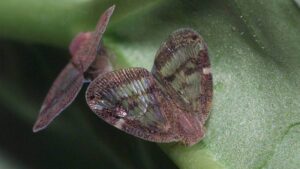
Pests include slugs, snails, passionvine hoppers, thrips and aphids. Commercial growers control these with insecticides.
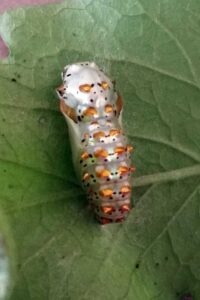
Passionfruit are viable for 3–5 years before they need replacing. Passiflora edulis is the main purple variety but there’s also a yellow version called Passiflora edulis flavicarpa.
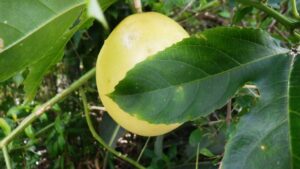
I call the yellow one Hawaiin Gold. More info elsewhere in this site to view
I have the seeds of various passionfruits as well as some small plants for sale.Ask
 Any questions or if buying, contact me HERE
Any questions or if buying, contact me HERE
![]()

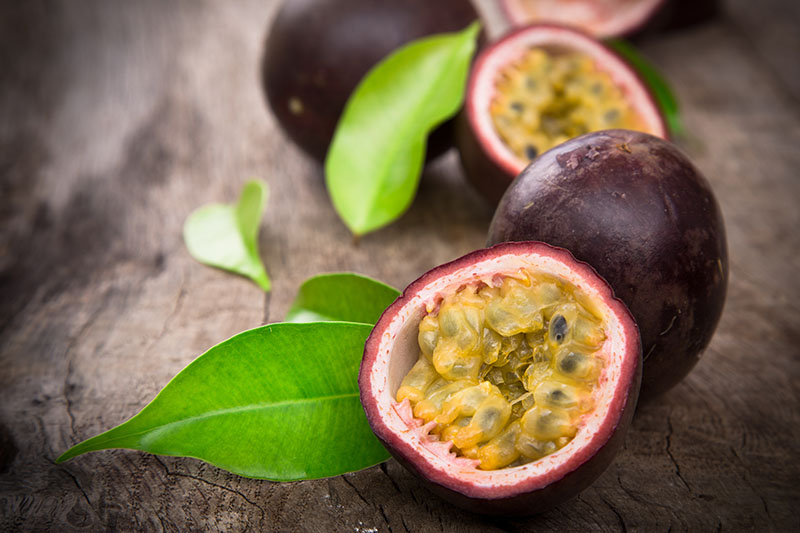
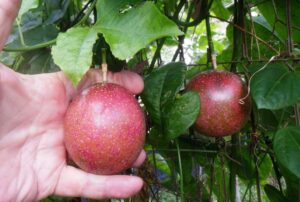
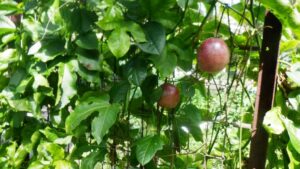
Recent Comments